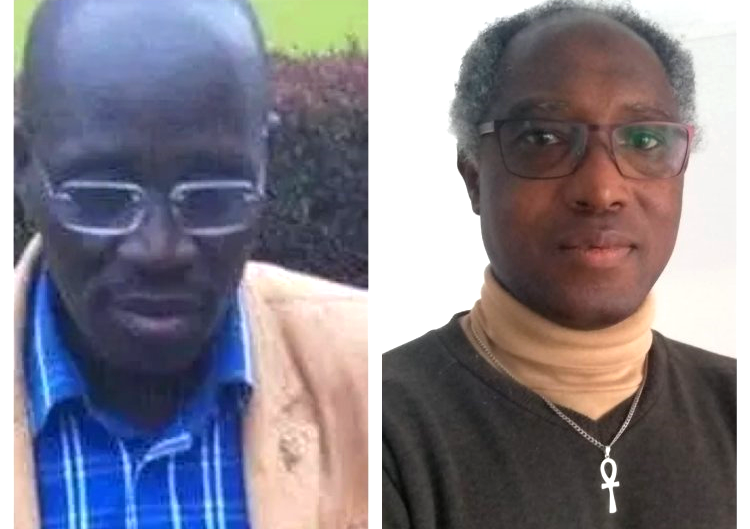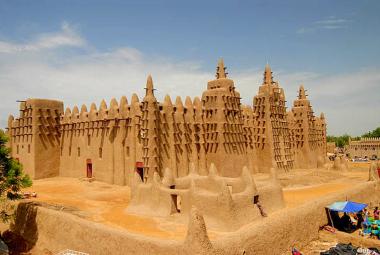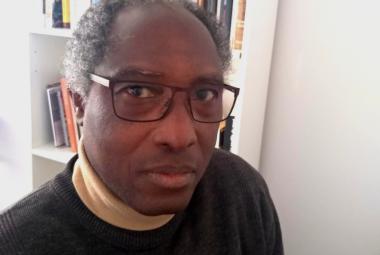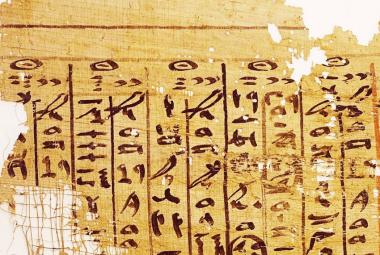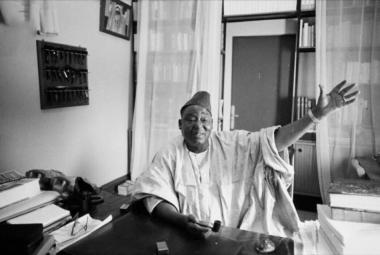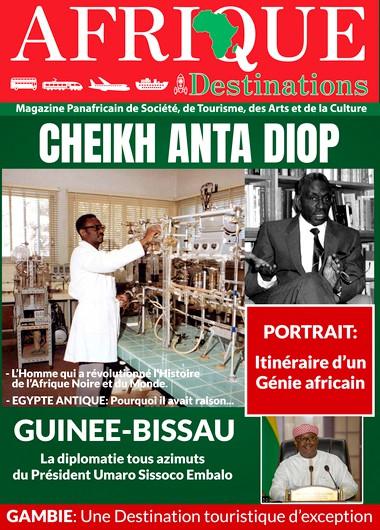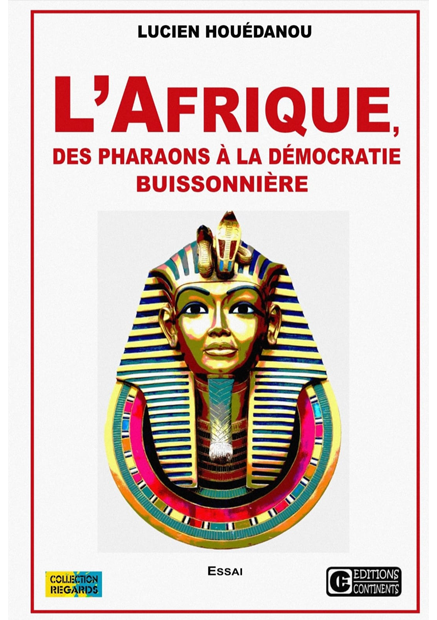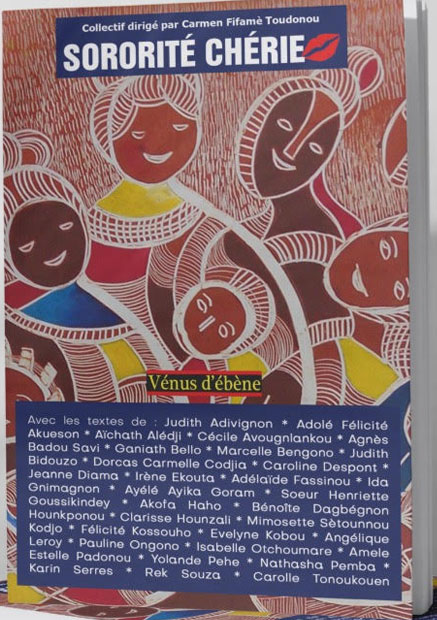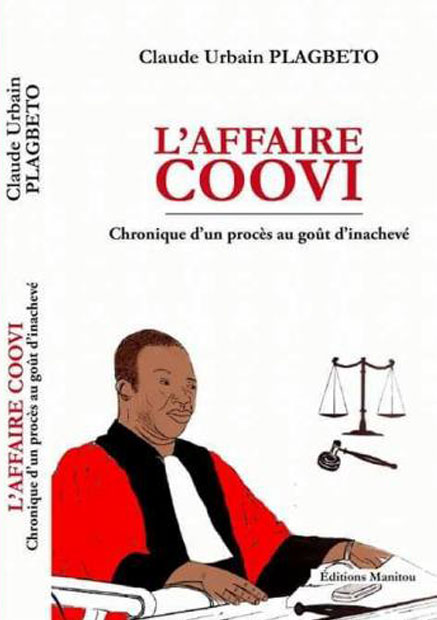In formative years , Luo people were known to be found in East Africa but Benin writer based in Spain in his historical writings about ancient history of Africa discovered the existence of Luo people in West Africa who have settled in Benin Republic.
Today Africa News editor Osman Draga interacted with him and below is the full excerpt:
Today Africanews (TAN): In order to keep us warm in this interview, I want to start with knowing your thermal profile?
Marcus Boni TEIGA: I’m quite doing well ! Everyday when I wake up and I could see the Sun, it means that everything is alright and everyrhing will be alright. Though everyday is a new challenge in life one must face, but one must do it with great optimism.
Today AfricaNews (TAN): Reading your publication « The Sao of Lake Chad an ancient and mysterious civilization in the center of Black Africa » in the book you speak about the fact the Natemba, are Luo descendants of the early migration. Long before the pharaonic era in Ancient Egypt. Yet in historywise, Luo people originated from Sudan, and settled around Lake Victoria basin in Kenya, Tanzania, Uganda, Congo, Ethiopia and Sudan. History in its polysemic did not mention Luo to have settlled in West Africa, now your revelation that you are a Luo of West Africa left me completely befuddled, can you historify and expound on your discovery ?
Marcus Boni TEIGA : You are totally right ! Why is it not mentionned ? Because we, Africans, we don’t know our true history untill now. Even if we know it, it is not taught to our people or children. When I take the case of Benin Republic, my country of orgin now, what is still taught in schools from Primary to University is not completely true. There are many errors or falsifications in the books we still refered to. Since most of them are written by people who are not Africans in the period of colonization or after.
Before I decided to cope with my research in History, I didn’t know my people, the Natemba, had any link with their close cousins the Ghanians of the North of the country and many other people in West Africa. We knew however our ancestors came from Lake Chad in olden days. I didn’t know my people and their language had any link wtith the Luo and their language before speaking about ancient Egyptian and frurthermore today Indian languages, etc. There have been several migrations from Sudan and one of them, the earliest that went to Lake Chad and settled for many centuries. It means that there have been a migration towards Lake Victoria basin in Kenya, Tanzania., Uganda, Congo, Ethiopia and Sudan, etc. and another one, I insist the earliest, towards Lake Chad, Nigeria, Niger, Burkina Faso, Ghana, Benin Republic, Togo and even Ivory Coast.
Professor Cheikh Anta Diop truly right when he wrote that the Sao were already in Lake Chad around 2300 years BC. And above all they are still words as the Natemba or Nounyo-Luo I am, I could understand. I mean some words from Luo language though the languages have evolved. For example : when you say « Rwot » in Acholi it means « Chief » or « King ». Isn’t it ? It is almost the same to name « Kingship ». The King is « Wollo » or « Woro » or « Ouoro » (The Horus in Greek as I already said) when « Kingship » is said « Wot » or « Woti » or « Ouot » when the ancient Egyptian would say NSwt which translated means : NOUN-SOU-WOT or NOUN-SOU-WOTI. Because, on closer inspection, Pharaoh is first of all the Son of Amon, The Hidden One or The unknowable: N(y)-swt-bity or Nesout-bity.
It is not one example. I could give you thousands and thousands of other examples of those common words we share till today with sometimes little variations and most of the time the same. In words as well as names or persons. When I hear Otieno, Obama, Onyanga, etc. I immediately know that these are my people. There is no doubt.
When I recently learned that archaeologists had made discoveries in Homa bay, I automatically said to myself that it is in Luo country. Because I identified the word « Homa » and a Natemba will tell you that you speak his language if you say « Homa » or « Nyayanga ». Despite millennia of separation, many common words have remained the same. Africa still has an enormous amount of research work to do in History and Linguistics.
In one of my editorials, I wrote this : « Instead of continuing forever to speak the language of the Colonizers in Africa, it is now time to oblige the States of Africa, at least the countries of Black Africa, to introduce the teaching of Swahili and even moreover the education in Swahili in Africa. And then, in a broad African debate, one could strive to seek apart from Swahili, what other language or languages should Africa promote as alternative languages of linguistic and cultural emancipation to replace the languages of the Colonizers. Indeed the independence and sovereignty of Black Africa must begin with the common language must serve as the language of instruction and main communication ». As long as education and all other communications the populations of Black Africa will make within or outside this continent will always be with so-called foreign languages or languages of the Colonizers, true independence and sovereignty would only be artificial and pure cosmetics. And we wouldn’t really know who we are.
Today Africa News (TAN): Which area in West Africa did Luo inhabited first, currently where they are found and the language spoken?
Marcus Boni TEIGA: I must specify or recall that Naten or Nateni or Natieni= Luo or Luwo or Luo or Lwo = Priests. These two names, before designating a name of people were first names linked to the function of priest. They simply became by extension and after their original significance people's names. And as I have always said: the Natemba are Luo or Luwo or Luo or Lwo who, leaving Nortgern Ghana, chose to be called Natemba from now on, which is always equivalent to saying Luo or Luwo or Luo or Lwo. I repeat, the Natemba call themselves Nounyo-Luo or Noun-Yo- Luo it is literal question of saying The men of God or those who act as Priest- sacrificers
Luo inhabited first, in Nigeria around Lake Chad. Currently most of them don’t even know they are Luo descendants, except the Natemba, because of the work I’ve done when ethnic group wanted to know who are really the present day Natemba and where they come from. And I could confirm that they are Luo and they still speak the Luo language of the ancient Priests who built the Civilization of ancient Egypt. But they are not coming from ancient Egypt since their ancestors left South Sudan earlier before the Pharaonic era. That is why I affirm, I persist and sign again to say that my mother tongue, Nateni, that is to say the language of Neter or Netjer which is the language of the Natemba or Netjema or Netema or Natema is if not the last, of the least one of the last surviving languages of that time in the Nile Valley. Apart from some cousin peoples, the only place where we find its linguistic substrate is only in India both in its different languages and its different forms of spirituality. Proof, I still have some to show off... The Indians and other Indianists would only reinforce me on this very ancient presence of the people of the Nile valley in the Indus valley and more generally in India. I'm talking about at least 15,000 years before Christ.
To many friends and colleagues, Luo or Luwo or Luo or Lwo in East Africa, I often say: there are Luo or Luwo or Luo or Lwo in East Africa but also in West Africa
Studying the History of ancient Nile Valley taught me, in fact, Luo People are comming from ancient Nuer People group like ancient Nuer People coming from ancient Dinka group by scissiparity. This is more than a hypothesis for me but I have to confirm it with further research.
The Natemba themselves are coming from the ancient Mamprusi group in the North of Ghana which is the ancient Nanumba group that split in three groups at their arrival in present day Ghana: the Mamprusi, the Dagbomba and the Nanumba.
Today Africa News (TAN): Before your revelation, I knew historyless about Luo in West Africa, what do you think happened in the Paleolithic period that led to the historical ethnocide of Luo in West Africa into the historical books?
Marcus Boni TEIGA: “On May 27, 2021, in the journal Scientific Reports, new information was published by a team of French researchers about the dead at the Jebel Sahaba necropolis. This is the oldest cemetery in the Nile Valley, located on the borders of Egypt and Sudan. A site that dates back between 13,400 to 18,600 years, and which thus corresponds to the end of the Paleolithic.
“Since its discovery in the 1960s, the cemetery of Jebel Sahaba (Nile Valley, Sudan), 13 millennia old, was considered one of the oldest testimonies of war in prehistory. Scientists from the CNRS and the University of Toulouse - Jean Jaurès have re-analyzed all the bones kept at the British Museum (London) and reassessed the archaeological context. In Scientific reports on May 27, 2021, they show that it is not a single armed conflict but rather a succession of violent episodes, undoubtedly exacerbated by climate change ”.
With her colleague Marie-Hélène Dias-Meirinho from the University of Toulouse Jean Jaurès, Isabelle Crevecoeur, paleoanthropologist at the CNRS, the researchers re-studied the human remains of Jebel Sahaba in the Egypt and Sudan department of the British Museum in London .
They concluded that it was not a single battle but several battles, particularly in light of the different injuries suffered by the victims. The aridification of the climate could have pushed groups of humans who once lived in a large area towards the river, where it would have been easier to find animals to hunt and fish. “These changes were not gradual at all. They had to survive these changes which were brutal, said Crevecoeur”, the first author of the study.
This new discovery could not be more interesting in more ways than one about the Kissira Migration. Especially since it is likely to illuminate or elucidate its chronological starting point. Since the ancestors of present day Natemba enter West Africa with the migration known historically as KISSIRA migration.
First of all: it was due to climate change that led to a memorable famine that the above named migration took place. We already knew this from African oral sources, but it confirms and clarifies the nature of the climatic catastrophe and the clashes that may have taken place to access natural resources because of their scarcity.
Secondly: the African oral sources that have come down to us have always located the epicenter of the Kissira migration in Mesopotamia. Perhaps we should now reconsider such information to retain only the Nile Valley. By taking into account rather that according to which this migration would have finally taken the direction of West Africa and another direction of Mesopotamia before joining the Indus Valley. And for good reason, it seems illogical and incomprehensible for a population to migrate from a place where famine is rife to another place and leads to frequent and violent clashes.
Thirdly: the period determined by specialists is between 11,000 and 20,000 years ago, towards the end of a period known as the last glacial maximum, when the ice caps covered a large part of the northern hemisphere, disturbing the Earth's climate.
Today Africa News (TAN): In your book you are talking of Louo or Louwo which is not spelled alike with Luo in East Africa, any historical explanation?
Marcus Boni TEIGA: The name Luo is not spelled the same way, because as I said earlier, we use the languages of our Colonizers. The British had many Colonies in East Africa while the French had many in West Africa. And as I write in French, it is normal that there is a difference in the writing. But it is also these obstacles or barriers of foreign languages that prevent my brothers and sisters from East Africa from reading me. All the more reason to know that there are Luo people elsewhere than in East Africa. Unless I do English translations of my books.
Having said that, and to come back to this historic omission, something very important in my opinion should be said.
Next year, we will celebrate the 50th anniversary of the 1974 Cairo symposium on the peoplling of ancient Egypt and the deciphering of the meriotic script. What did Professor Cheikh Anta Diop said to conclude his statement:
“To really agree, in the sense of Professor Vercouter, and to provide clarification, that is why I am intervening. I would like to say this that, a mission, finally the study of the Darfur region, Darfur is almost contiguous, not quite but finally it is to the West of this region of which I have just spoken. So uh, actually, The migration split into two. There's one that goes along the tropics, which is between the two tropics, if you like between the tropics and the equator, and which slipped into this corridor, didn't it, until in Senegal. And the other which immediately followed the Zaire Valley at the level of the Uélé Valley which absolutely stake out and which arrives as far as the Atlantic Ocean, which goes up the coast a little, and which stops at the Cameroon level. And so, therefore, the populations that are in the Gulf of Guinea region, that is to say the Yoruba and others, appear as trapped populations. And we see a superposition of two populations, we see that the Yoruba migration and the migration from the Gulf of Guinea region is an earlier migration and then the other came to take it almost like a pincer parallel on the one hand and with downhill. So, by studying Darfur, we would be studying the starting point of these migrations, that is to say the whole region of the Upper Nile that Madame Blanc had pointed out. I would like this region to be included.
The Nuer-Shilluk-Dinka-Kaw Kaw region with emphasis on the study of Kaw Kaw particularly at risk of extinction. So that, I think, a mission in this region, where there would be – not me because I no longer have the courage to be part of such missions, so I am excluded – a mission where there would be Senegalese that we would take, or in any case people who are supposed to have come from this region who would rediscover names and ethnic groups more easily, huh…who would rediscover in a way the starting point of their tribes or their clans, I believe that this is a mission which would be of great interest and which would be a multidisciplinary mission. We could... It would not be a question of composing this mission only with Senegalese. But, in addition, there should be specialists in linguistics who would come from Uganda or other regions, specialists in such other languages, etc. But that in the group there are still some elements who have a certain training, let's say at the level of the License, in the process of preparing postgraduate theses, coming from the regions where these migrations are supposed to have ended. ".
Unfortunately, this less complicated and less costly proposal by Cheikh Anta Diop was never implemented. After the famous Cairo Colloquium of 1974, academic and scientific circles did not believe they had to follow the recommendations of the Senegalese scientist. And yet, they could have made it possible to collect valuable information in its time, before the disappearance of many Guardians of Traditions or Griots who have since joined the Country from which one never returns, as the Natemba and the Batammariba would say.
Even with decades of delay, it would not be useless for UNESCO or, failing that, the African Union (AU) to organize this Cheikh Anta Diop mission. Because, there will certainly be many things to learn still, for the collective memory, in spite of the lost time.
In any case, Cheikh Anta Diop was well and truly right: the Sao were already in Lake Chad around 2300 years BC. To establish the link between the Sao of Lake Chad and the ancient Egyptians, it would be necessary to go back to Horus Crocodile better known in ancient Egyptian under the name of Shendjw or Hor Sehendet. Some Egyptologists, like Günter Dreyer who discovered him, believe that he reigned almost at the same time as Ka or Sékhen. The debate between Egyptologists about the name Iry-Hor and the accepted translation, namely Wr-r3 or Ouer-Ra which literally means "Big mouth" and in other words "Spokesman" or "Chief" according to Peter Kaplony, corroborates if it was still needed and in an obvious way the link of the current Natemba with Predynastic Egypt. Moreover, Wr-r3 or Ouer-Ra is completely equivalent to King-Priest or Priest-Sacrificer.
Today Africa News (TAN) : As a journalist, writer and Nubiologist is there any further percepective you can talk about African history?
Marcus Boni TEIGA: I have already said what I had to say or must say. It is up to our African Head of States and Governments now.
In my article about the boycott of the Kevin Hart show in Egypt, I wrote this: « One of the most used words today in our modern world interconnected by computers, telephones and other smartphones is Hacker and its other derivatives. However this word whose root is Hawk philologically does not belong to any other language than ancient Nubian. It is the strict prerogative of the linguistic universe of the origins of ancient Egypt. It is neither of English origin and even less American. NEKHEN was also called the City of Hawk. NEKHEN is the City of the origins of the Pharaonic Civilization. And since it was not black people who founded the brilliant band extraordinary Civilization of ancient Egypt. I challenge Egyptologists and linguistics to prove to me that it is not Negro-African I mean ancient Nubian originally.
Long before even being ancient Egyptian. The language of the ancient Egyptians was a Negro- African language more precisely of the family of languages known as Nigero-Congolese.
Ancient Egypt having been a settlement colony by Luo or Lwo of ancient Nubian. And I'm waiting for the contradictors, they have a thousand years to build their arguments.
Before being a heritage of humanity, ancient Egypt is above all heritage of Black Africa. Because its Civilization was founded by blacks of Africa.
Alexander Pope (1688-1744), in his essay on criticism, Paris, Librairie Hachette & Cie, 1881, wrote: “He who tells a lie does not foresee the work he undertakes; for he will have to invent a thousand others to support the first”.
It is a truth of La palisse. But we could also say that it is a truth of Alexander Pope.
By way of conclusion, I would be remiss if I did not challenge the Heads of State and Government of the countries of Black Africa so that they reclaim and integrate the history of ancient Nubia and ancient Egypt both in their historical and artistic heritage and in the writing of national histories in textbooks. In replacement of the manuals which date from the colonisl era and which we know are full of misinterpretations and untruths. The time has finally come when Black Africa must RE-ORGANIZE itself.
Marcus Boni TEIGA is a journalist and Writer, he was member of the team in charge of Media and Communication at the National Assembly of Benin Republic in 1996.
He headed Communication Department at the Ministry of Culture, Crafts and Tourism of Benin Republic (2005-2006). He was the General Secretary of the National Community of Voodoo Worship and Traditional Religions of Benin Republic (CNCVB).
Other posts he held include General Secretary and Communication Secretary of Benin Republic Writers and Literary People Association (AEGLB). He was winner of the Imhotep International Prize in Nubiology on Ancient Nubia at Brussels International pan-African Book Fair, Belgium in 2014 and he authored more than 20 historical books about ancient Africa among other publications. He was 2023 Dan David Prize Nominee.
By Osman Draga
Source: https://www.todayafricanews.com
Today Africa News (UGANDA)



